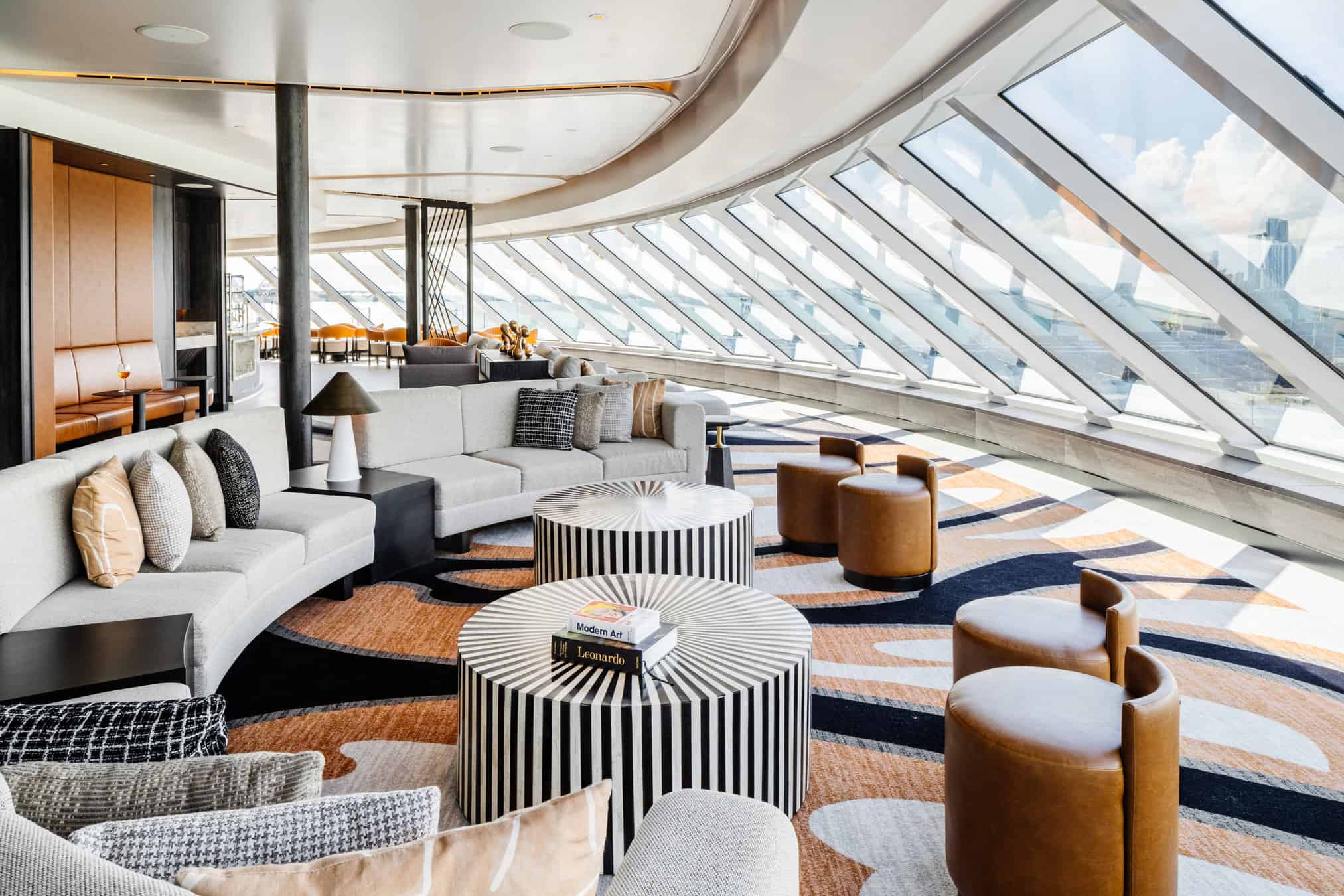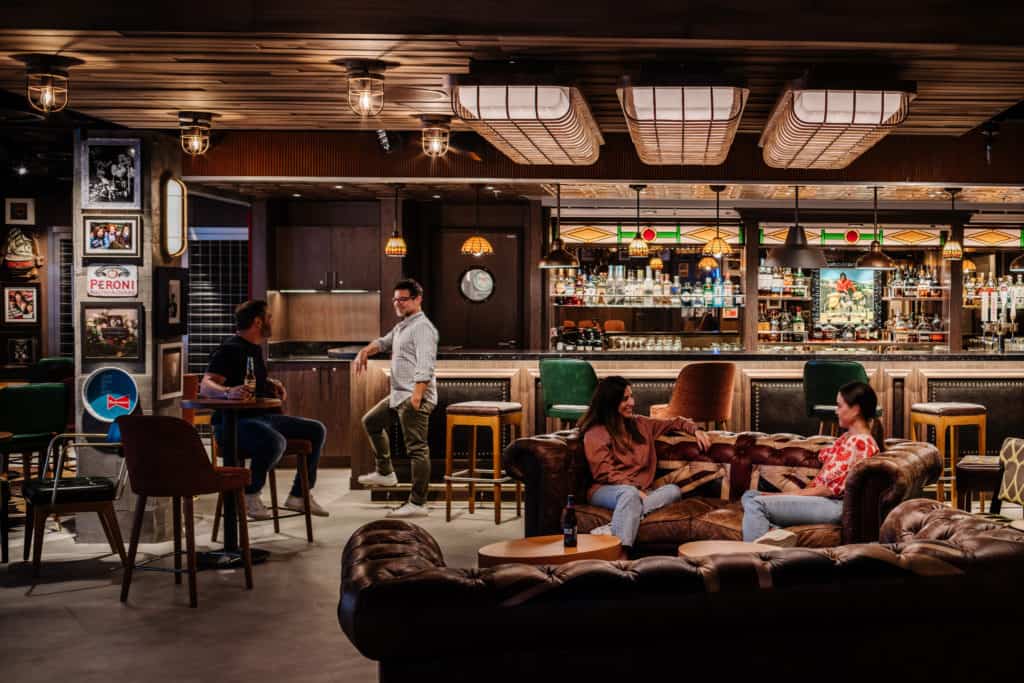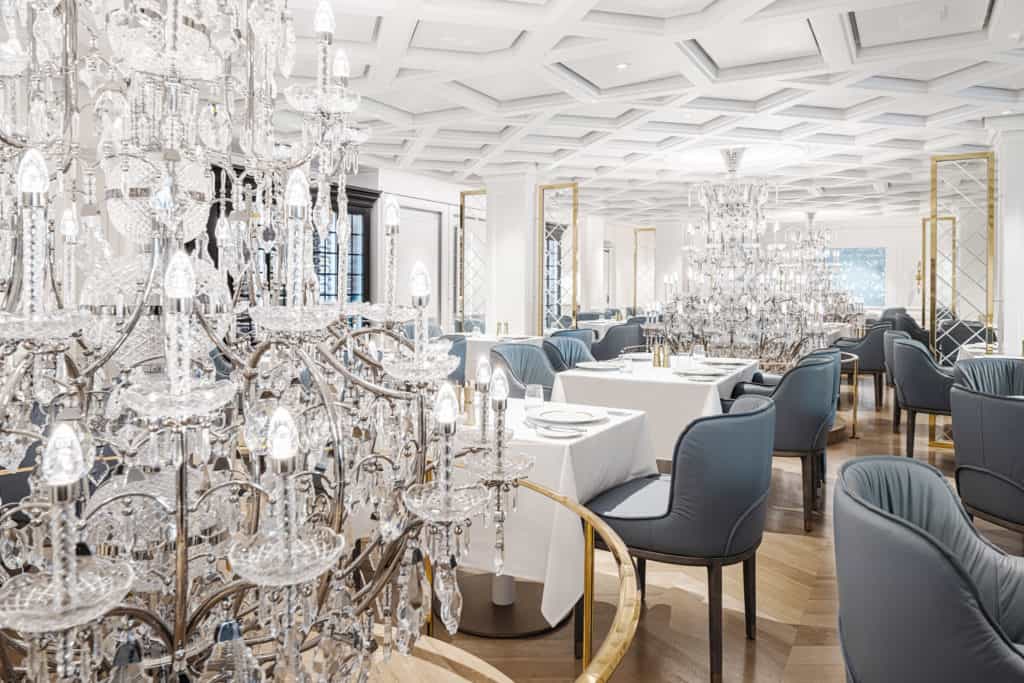
Last year was a big one for Studio DADO. Between award wins, maiden voyages and new clients, we had a lot to celebrate. And we couldn’t be more excited for what 2023 has in store both for our team and for the entire hospitality industry. Given what we’ve seen and the types of projects we’ve designed over the last year or two, these are the 2023 travel trends we see coming into full force this year and beyond.
Business in the front, party in the back used to be the sole purview of casual hairstyle enthusiasts. Now, it’s a full-on travel trend with many guests opting to extend business trips to add in leisure and family time. We are also seeing variations of this called “Hush Travel” (working remotely while on vacation), but there’s no question that this trend coincides with a comeback for business trips along with the major shift toward remote work. What does it mean for hotels and cruise ships? That designers and operators need to be prepared with spaces that can accommodate guests with different needs that can change on a dime. It means better, more seamless technology, blurring more lines between work and fun, and flexible services that encompass it all.

The Global Wellness Institute expects wellness tourism to hit $1.3 trillion in revenue by 2025. This move isn’t just about hotel spas—“wellness tourism” is defined as any trip that is meant to maintain or enhance personal well-being. For many people, it’s a reframing of what travel is and what it can be. It also solidly aligns with the kind of transformative travel that many of our cruise line clients aspire to give their guests.
We see this mindset shift as a huge opportunity for designers and operators alike to put a greater emphasis on holistic health, meditation, physical activity, and farm-to-table food in every property.
From Lord of the Rings to The White Lotus, popular movies and television are increasingly inspiring travel plans. Some writers have deemed this trend “Set-Jetters,” as more travelers flock to movie and TV set locations. In terms of design, leaning into this trend will mean a careful balance between recognizing what guests are looking for and providing the right atmosphere and activities without turning a hospitality space into a theme park.
The thing about the service industry is that it relies on, well, service. It’s not always directly about the guest experience—it’s about hiring great employees and figuring out how to keep them. Spoiler alert: it takes more than money. Using design to help staff do their jobs better, more efficiently and more comfortably is absolutely key when designing any hospitality space, from cruise ships to land-based hotels to restaurants.
Along with green travel and a wellness focus, hyper-local, “zero-kilometer” food is more popular than ever. Some of our favorite restaurants and chefs in Miami work with local farms to cut down on carbon footprints and increase authentic flavors, and we only see this concept growing to hotel brands and restaurants. This ties nicely into the mounting 2023 travel trends for wellness and sustainable travel, and hyper-local dining is only going to get bigger, more lucrative and guests will eventually come to accept it.

Somehow, over the last few years, everything has started to look the same. 25 years ago, every mall in America began looking the same. And then every store within the same tier or category had a similar look. Now that same homogeneity is creeping into the hospitality world. No matter where you go, it’s hard to find hotels and hospitality environments that create genuine emotional connection. They have become thoroughly generic. But this isn’t who brands say they are and it’s not what guests want. We see hoteliers moving away from the bland and, instead, embracing authenticity and a sense of place, tailoring their brands and design guidelines to match the locale. As designers, we know this is the right way to go and the best way to inject more life back into the hospitality sector.
Thoughtful, customized interactions with guests will increase value creation in 2023 for hospitality organizations. But it requires brands to pinpoint exactly what they offer guests, identify what makes them unique, and tailor their efforts to reach a targeted guest segment. Increasingly, guests want to be seen and treated as individuals. Brands that invest in the training, infrastructure, and specialized staff to give guests a customized experience will reap the most rewards from this travel trend.
Social media platforms may ebb and flow in popularity, but the idea of an “Instagrammable Moment” is only getting bigger, even if that moment goes on TikTok or BeReal. Jaw-dropping, exquisite design, art and leisure spaces drive travel planning—the kind of places and spaces that make everyone else on the feed jealous. This trend extends to dramatic dining experiences that entertain and immerse diners as much as feeding them a good meal, along with the express opportunity to take a fabulous photo.

There has been a swell in pet-friendly travel in the last few years and it’s time for the hospitality industry to step up even more. We expect to see more hotels offering activity areas for pets, on-site doggy daycare, and a generally more flexible attitude toward pet owners. Who knows? We may even see certain brands exclusively bill themselves for pet lovers and offer dog-friendly menus, chew toys and a long, sniffy walk at check-in.
After years of uncertainty around big family get-togethers, multi-generational travel is surging again. Cruises have always been a very popular option for this kind of trip, given the various kids’ activities, dining options and family fun all in one place. For land-based hospitality brands, multi-generational travel groups will expect a lot more flexibility for adjoining rooms, dining and activities, and it all comes down to thoughtful, comprehensive design.